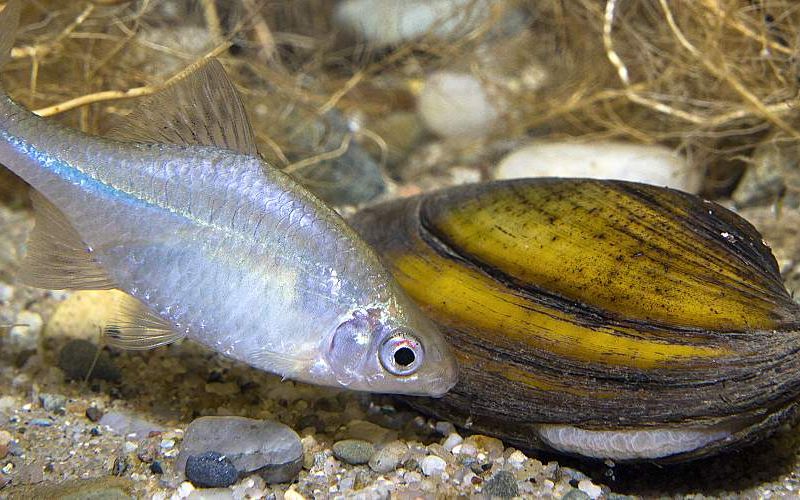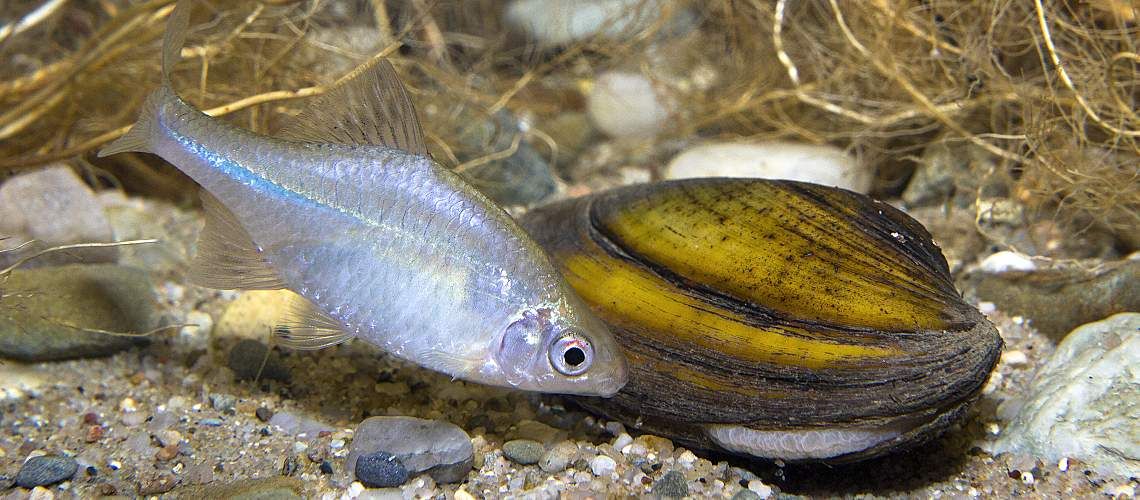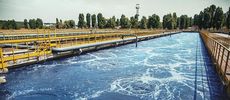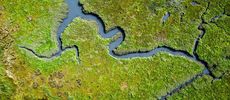Freshwater Mussels Help Clean Degraded Waters


Various forms of pollution cause degraded waters, including suspended sediment, excess nutrients, harmful bacteria, and heavy metals. A water body with too much nitrogen, for example, can suffer from toxic algae blooms and depleted oxygen, harming aquatic life. But freshwater mussels can help by acting as biofilters and bioindicators to restore water quality in streams and rivers.
Worldwide, mussels have long been living indicators of aquatic ecosystem health. Various researchers have used mussels to monitor for pollutants—for example, by detecting microbial contamination of the water around them. Now, scientists are taking a closer look at mussels' potential to filter water and remove harmful substances like microplastics.
Here, we'll discuss the characteristics that make mussels valuable as biofilters and bioindicators and how they can be used to improve water quality.
Mussels as Biofilters
More than 300 species of freshwater mussels live in North America, coming in all sizes, shapes, colors, and ages. In the right conditions, mussels can live for more than 100 years.
Unfortunately, favorable conditions aren't always present. For example, unionid mussels are endangered due to the use of their shells for buttons, dams that prevent them from expanding their ranges, contaminants and sediment in surrounding waters, and competition with invasive species like zebra and quagga mussels. Freshwater mussels can't escape when their habitat is unfavorable, but they often provide a livable habitat for other aquatic species.
This can make mussels ideal for improving water quality as biofilters. Unionids, for instance, pull in approximately 8 to 15 gallons of water a day through a siphon between their shells. They pass the water over their sieve-like gills, filtering bacteria, algae, and plankton. The mussels ingest this nutritious material and eject the rest through an exit siphon, cleaning the water. By improving light penetration, the clearer water makes it possible for aquatic vegetation to grow. And by excreting waste, mussels allow bottom-feeding organisms to eat. Researchers have likened freshwater mussels to miniature wastewater treatment facilities.
Mussels as Bioindicators
Mussels are often used as biological indicators of pollution. Analyzing freshwater mussels' behavior can provide early warning of harmful agal blooms (HABs), pollutants and drops in oxygen.
Unfortunately, mussels can't always rid themselves of all the contaminants they consume. Despite their potential for long lives, a decline in water quality can cause a drop in longevity, total number, or diversity of species. This can also be a preview of decline in other water and land species.
Another concern is bioaccumulation—when harmful substances taken in by mussels work their way up the food chain and are concentrated in other animals and humans that eat them.
Contributions to Clean Water
In Minneapolis, mussels actually cleaned wastewater at the Water Treatment and Distribution Services. A dozen mussels fed off Mississippi River water, pulling in nutrients. When the mussels didn't like what they were ingesting, they closed up, indicating water quality issues.
Many small urban streams suffer from degradation but are being restored. The presence of mussels is critical to ecosystem health. Researchers from several East Coast colleges are working with the U.S. Fish and Wildlife Service to reintroduce freshwater mussels to two streams in Reston, Virginia. The scientists hope to quantify mussels' ability to provide aquatic bioremediation by removing pollution and improving degraded waters.
In addition to use of freshwater mussels to provide ecoservices, biomimicry has also inspired filtering devices based on how they function. A mechanical monitoring device—the Artificial Mussel was designed to track heavy metals. When the device is lowered into water, the small plastic tubes contain a gel that traps trace metals. The metals accumulate in much the same way they would inside live mussels. These surrogates were tested in Australia in 2009 and 2011 and helped scientists identify areas that might be at risk for wildlife and humans.
Ultimately, mussels and their imitations perform a vital service—by improving their own environment, they make it healthier for all other animals and humans in the ecosystem.






